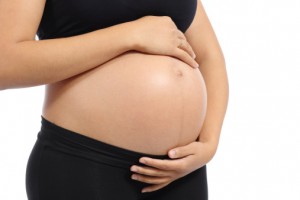New Report Highlights Risks, Benefits of VBAC
 Cesarean births have been occurring with increasing frequency in the United States. The Centers for Disease Control and Prevention determined that cesarean deliveries made up more than 32 percent of all deliveries in this country in 2013. As more women are delivering their babies by C-section, questions about the safety of vaginal births after cesarean have also increased. A new report from Health reiterates the benefits and risks of vaginal birth after cesarean, known as VBAC.
Cesarean births have been occurring with increasing frequency in the United States. The Centers for Disease Control and Prevention determined that cesarean deliveries made up more than 32 percent of all deliveries in this country in 2013. As more women are delivering their babies by C-section, questions about the safety of vaginal births after cesarean have also increased. A new report from Health reiterates the benefits and risks of vaginal birth after cesarean, known as VBAC.
The Health report cited data from a government study that found 90 percent of women who had a C-section for a previous birth also have a cesarean for a subsequent birth. This number is extremely high, particularly when considering the additional risks involved with cesarean deliveries.
Facts about VBAC
The report in Health lists a number of facts about VBAC that women should know before they plan for this type of delivery. First, the conditions must be right for a safe VBAC. This means the baby must be in the correct position and there is sufficient fluid in the amniotic sac. Because uterine rupture is a danger during VBAC, the uterus should be evaluated for potential rupture prior to beginning the labor process.
The need for an induction does not necessarily rule out the ability to proceed with a VBAC, but it does raise some additional risks. Some studies have indicated induction using a drug like Pitocin could increase the possibility of uterine rupture. However, many women have successfully undergone a VBAC with induction, if the physician and hospital staff are experienced in the procedure and the mother is carefully monitored for potential complications.
It is important to note that labor during VBAC may be slower than expected. The Health report encourages women undergoing VBAC to allow labor to progress at its own rate to make the process safer for both mother and baby. Medical personnel overseeing the labor and delivery should also be on alert during a VBAC for potential issues that might necessitate an emergency C-section.
Risks associated with VBAC
Although VBAC is considered safer than cesarean birth in the majority of cases, there are situations where VBAC might be contraindicated. For example, if the original cesarean was performed due to a problem that could be repeated in subsequent pregnancies, VBAC might not be the right choice. If a woman has a history of uterine rupture or a high-risk uterine scar from a previous C-section, the danger of uterine rupture with the current pregnancy may be too high.
If a woman chooses to undergo VBAC, it is important for medical staff to remain alert to warning signs that might indicate a C-section would be a safer choice. When the medical staff does not respond properly to those warning signs, there is potential for injury for both the mother and baby. Complications for the baby might include fetal distress, oxygen deprivation, brain damage and even death, often caused by uterine rupture.
Common signs of uterine rupture include sudden cessation of contractions, changes to fetal heart rate, vaginal bleeding and pain around the area of the uterine scar.
- Health, The Facts about Vaginal Birth after Cesarean, http://news.health.com/2015/08/17/the-facts-about-vaginal-birth-after-caesarean/
- Mayo Clinic, Vaginal Birth after C-Section (VBAC), http://www.mayoclinic.org/tests-procedures/vbac/basics/definition/prc-20020457
- The American College of Obstetricians and Gynecologists, Vaginal Birth after Cesarean Delivery: Deciding on a Trial of Labor after a Cesarean Delivery, http://www.acog.org/-/media/For-Patients/faq070.pdf?dmc=1&ts=20150930T1716034230
- American Pregnancy Association, VBAC: Vaginal Birth after Cesarean, http://americanpregnancy.org/labor-and-birth/vbac/


 Resources
Resources
 Resources
Resources
